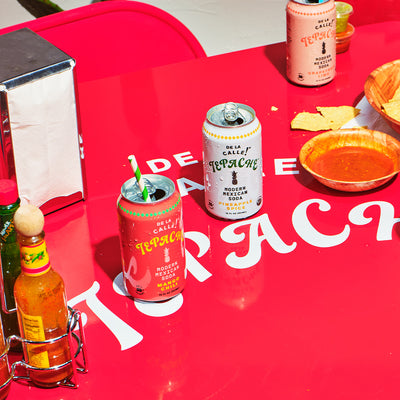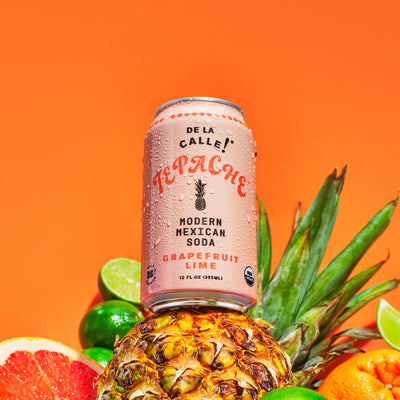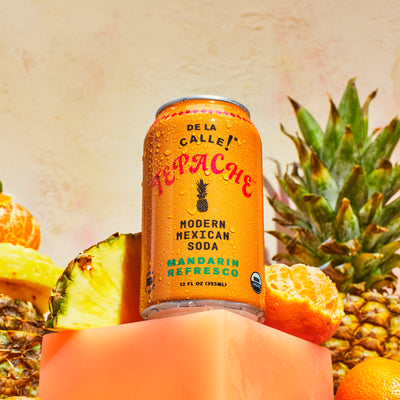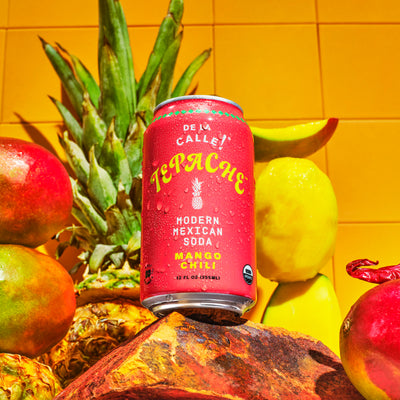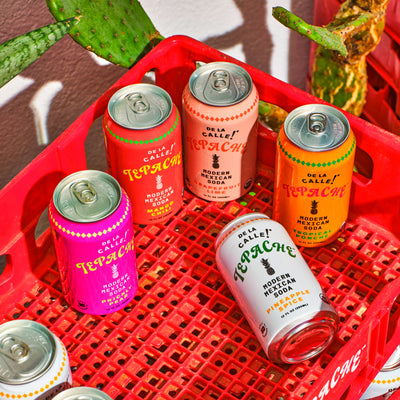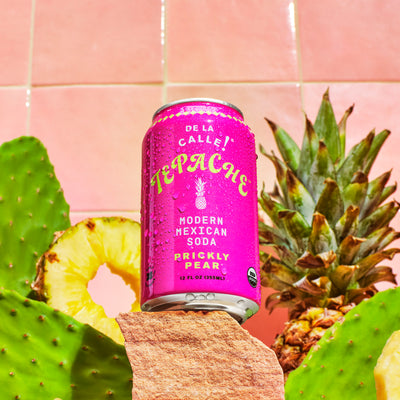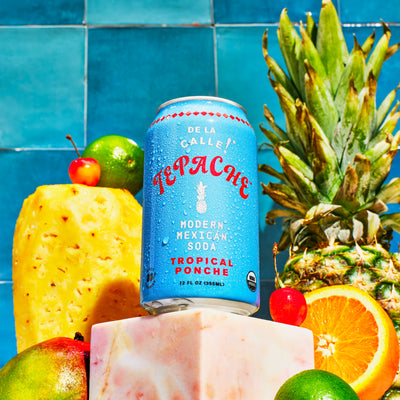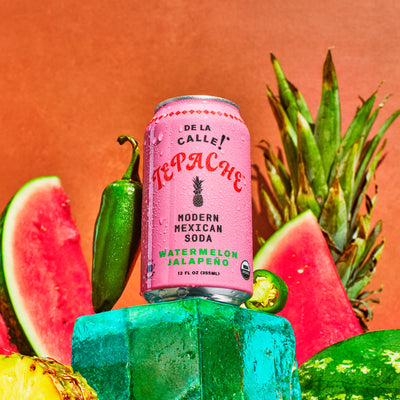What is Agave: Calories, Nutrition Facts, and More

Agave or agave syrup, is a new trendy sweetener that has gained popularity outside Mexico in the past few years, especially when it comes to mixing it into delectable drinks like tepache.
In this article, we’ll take a close look at the nutritional value of agave, its benefits and downsides, and how it compares to honey, another natural sweetener.
What is Agave?
Agave is a natural sweetener that comes from the agave plant which is also used to make tequila. The agave plant is found in the American Southwest and in parts of Latin America.
It is sometimes known as the “century plant” because most species of agave grow very slowly. For this reason, pure agave products such as agave syrup and tequila are usually more expensive because of the extended period of time the plants need to mature.
The type of agave used to make both agave syrup and tequila is called blue agave. Once mature, blue agave plants grow into 7ft tall succulents with spiky leaves. For the most part, blue agave is native to four Mexican states: Jalisco, Colima, Nayarit, and Aguascalientes. It has been used in Mexican cuisine for at least hundreds and possibly thousands of years.
In recent years, agave has gained popularity outside of Mexico and is often marketed as “agave nectar.” Although the word nectar is used, the product is just agave syrup. The health food world has thoroughly embraced agave syrup as the new trendy sweetener for several reasons that we’ll dive into later in the article.
How is Agave Syrup Made?
In order to make sweetener from agave, the agave plant is cut and pressed. This process extracts the sap which is naturally extremely sugary. Although there’s ample sugar in the sap, it is also full of health fiber such as fructan which can aid in gut health.
The sap is then filtered to remove impurities. Once it has been filtered, the sap is slowly heated at a low temperature which breaks down the fructan fiber into fructose. The liquid is finally concentrated into the syrup that is commonly sold as “agave nectar.”
Taste
Agave is naturally 1.5 times sweeter than sugar and because of its texture closely resembles honey, although it is much thinner. That being said, agave does not have the same floral taste as honey and is a relatively neutral sweetener which makes it a desirable addition to baked foods and beverages such as tepache.
If you find that your agave syrup is too sweet, it can be diluted with a 1:1 water ratio. If you’re hoping to give your agave syrup a flavor boost, it pairs well with ground cinnamon and vanilla extract.
Agave Grades
Much like with tequila, agave syrup comes in several different “grades” which correlate to both color and flavor:
-
Light grade agave is almost translucent and closely resembles other clear sweeteners such as simple syrup. This type of agave pairs best with subtly-flavored recipes because the flavor of the syrup is almost unrecognizable.
-
Amber agave has a stronger flavor and a texture that closely resembles honey. By far the most common type of agave syrup available, this is a versatile sweetener that can be used in most recipes because it has a nice, sweet flavor but does not overpower other strong flavors.
-
Dark agave is the strongest type of agave syrup available. Its texture is similar to that of molasses. It works well as a coffee sweetener and can sometimes be used in a similar way to maple syrup in recipes.
Nutritional Information
Now that we’ve covered the basics of what agave is and how it’s made, let’s take a look at the nutritional information.
In one tablespoon of agave syrup there are:
- 60 calories
- 0 grams of fat
- 0 grams of protein
- 0 milligrams of cholesterol
- 0 milligrams of sodium
- 16 grams of carbohydrates
- 16 grams of sugar
There are also small amounts of the following vitamins in one tablespoon of agave:
- Vitamin B2 (Riboflavin)
- Vitamin B6 (Pyridoxine)
- Vitamin B9 (Folate)
- Vitamin K
Benefits
Agave is an attractive sweetener for many reasons. Given that it packs a much sweeter punch than sugar, you need less agave to achieve the same sugary result than you would if you were using regular sugar.
Also, agave is vegan which makes it a better alternative to honey for some people with specific dietary restrictions.
Vitamin B6
Another benefit of agave syrup is that it naturally contains Vitamin B6 or pyridoxine. This vitamin is crucial for proper digestion, helping your body to break down both proteins and carbohydrates.
It also supports heart health by regulating your homocysteine levels. Additionally, Vitamin B6 has also been known to reduce the symptoms of morning sickness in pregnant women.
Downsides
While there are numerous benefits to agave, there are some important downsides to this sweetener that you should know about.
As with most sweeteners and sugar, an excess of agave in your diet can lead to weight gain, Type 2 diabetes, heart disease, and dental issues. That being said, it’s good to use agave in moderation.
Agave vs. Honey
Given all the comparisons to honey we’ve made so far, you might be wondering how these two natural sweeteners compare to one another.
We’ll take a look at two different metrics, GI and sugar composition, to compare agave to honey.
Glycemic Index
Agave has a relatively low glycemic index (GI). Glycemic index is a measurement of how much a carbohydrate-rich food, such as a sweetener, will raise blood glucose levels.
For people looking to maintain their blood sugar levels, agave is an attractive sweetener because it will not cause spikes in blood sugar or high amounts of insulin release. Low-GI foods are also digested slower which means they will leave you feeling full for longer.
Honey, on the other hand, has a high GI which means that it can cause blood sugar spikes and may therefore be risky for anyone hoping to keep their blood sugar low, such as people with diabetes.
GI Sweetener Overview by the numbers:
- White table sugar: 60
- Honey: 58
- Agave: 19
Sugar Composition
Although agave looks much better than honey when it comes to GI, the sugar composition of agave makes it a less attractive choice. Agave is made up almost entirely of fructose, whereas honey consists of only about 40% fructose. The other primary sugar in honey is glucose. You might already be familiar with the harmful effects of fructose given the recent efforts in the health food world to avoid foods containing high-fructose corn syrup.
This is an issue because fructose is processed by the liver which can easily be overwhelmed by high amounts of fructose. When the liver becomes overwhelmed, it begins to make triglycerides which can be dangerous for your weight and overall health.
The Bottom Line
Agave is a natural sweetener made from the agave plant which is the same plant used to make tequila. Agave comes in a variety of grades but for the most part is a subtly flavored sweetener that has a similar consistency to honey.
Agave offers a few health benefits seeing as you need to use less of it to achieve the same level of sweetness as with sugar or honey and it has Vitamin B6, an important vitamin that aids in digestion.
When compared to honey, agave has a lower glycemic index but a higher amount of fructose so, as with all sweeteners, it is best consumed in moderation -- such as in a deliciously gut-healthy fermented pineapple beverage, perhaps?
Sources:
https://familydoctor.org/high-homocysteine-level-how-it-affects-your-blood-vessels/
https://www.ncbi.nlm.nih.gov/pmc/articles/PMC5424551/
https://www.health.harvard.edu/blog/is-fructose-bad-for-you-201104262425

